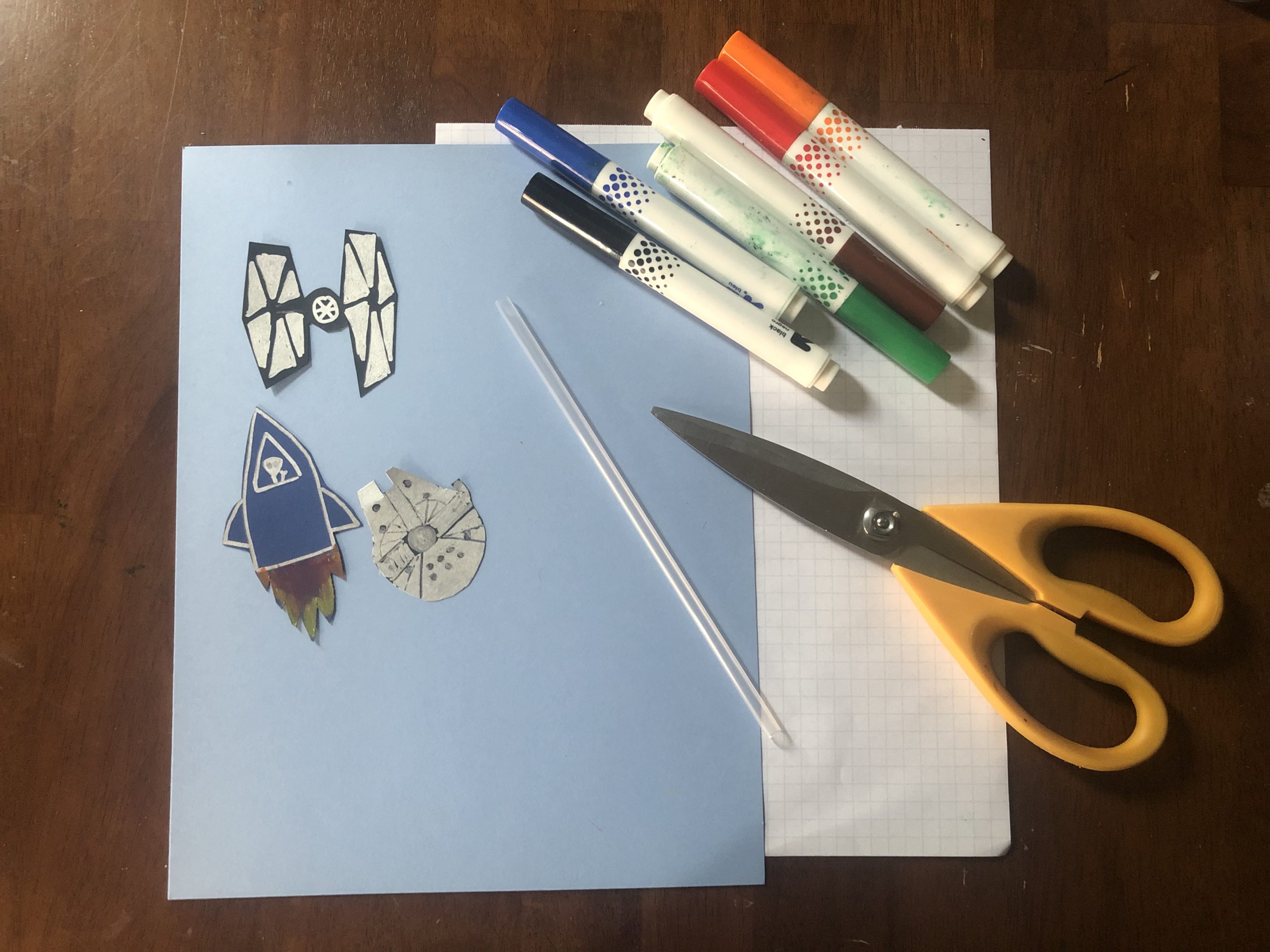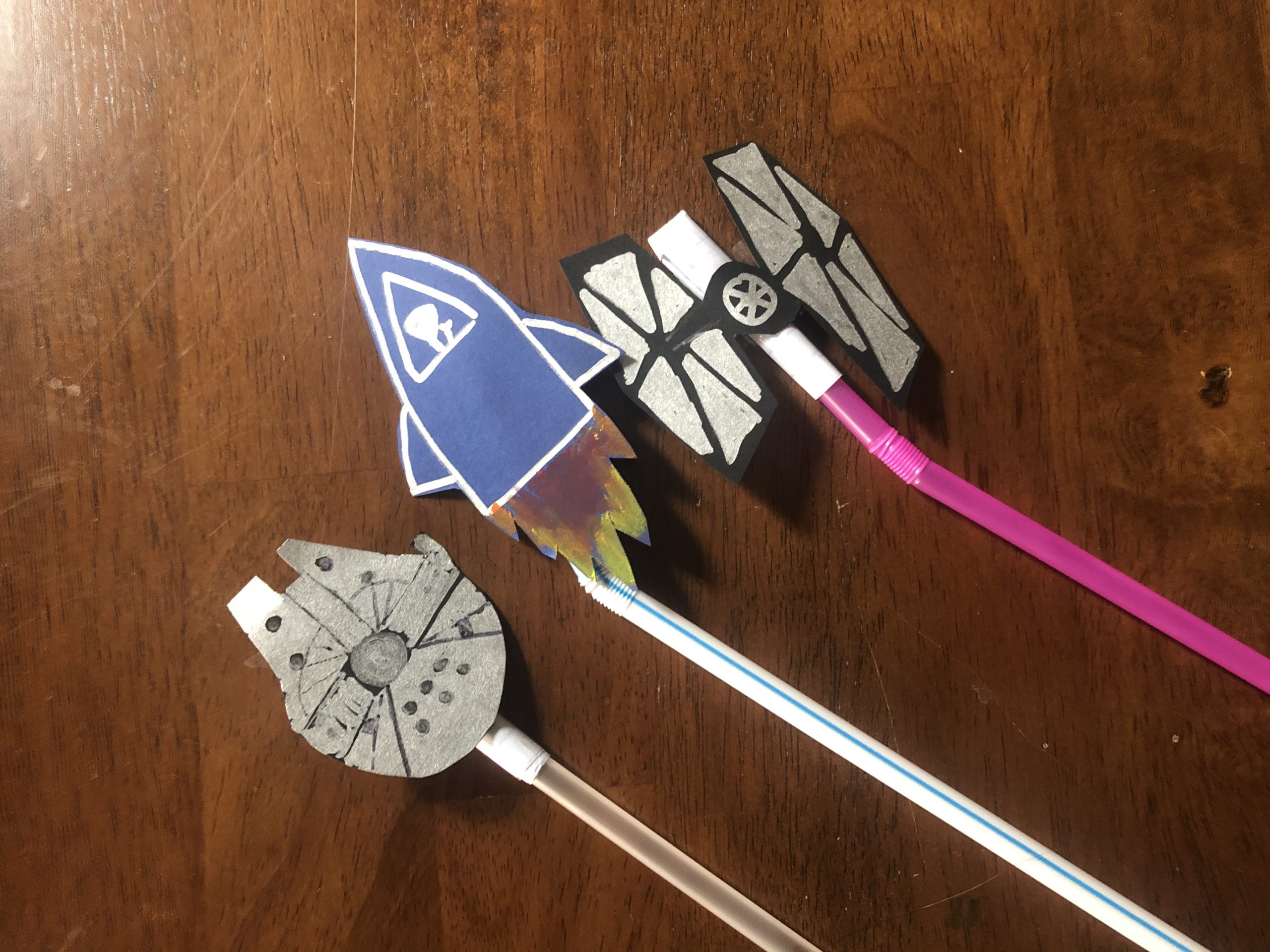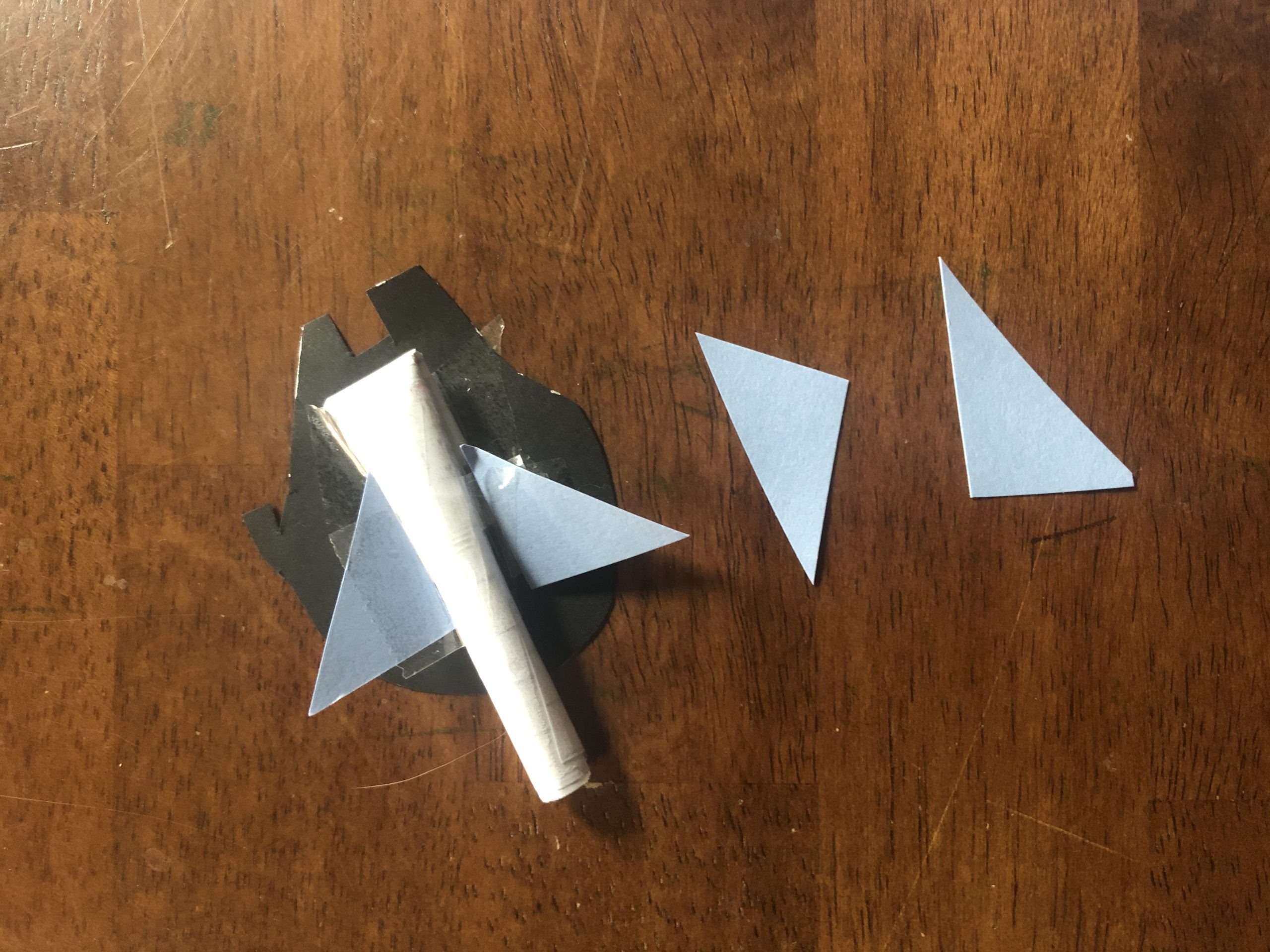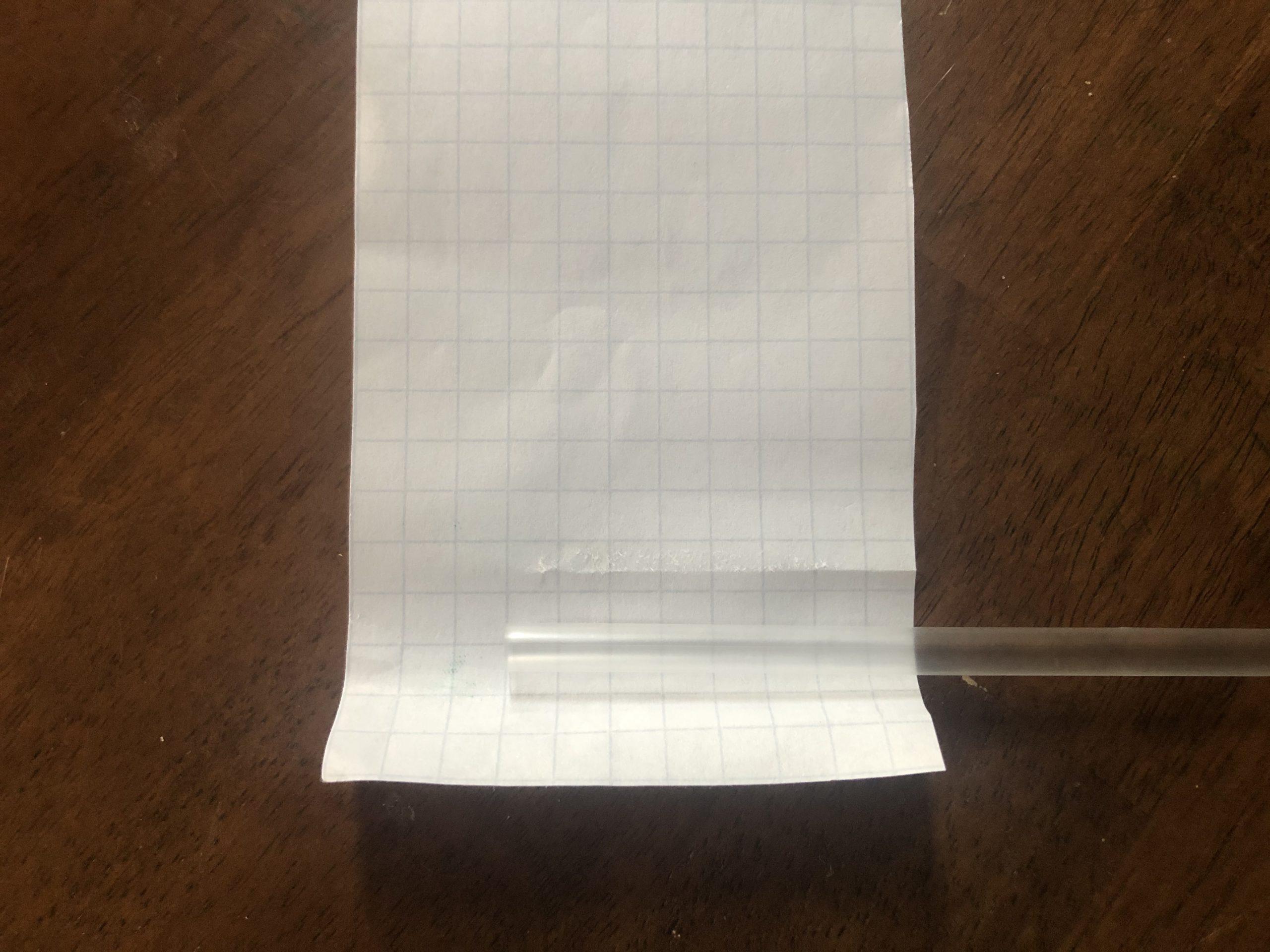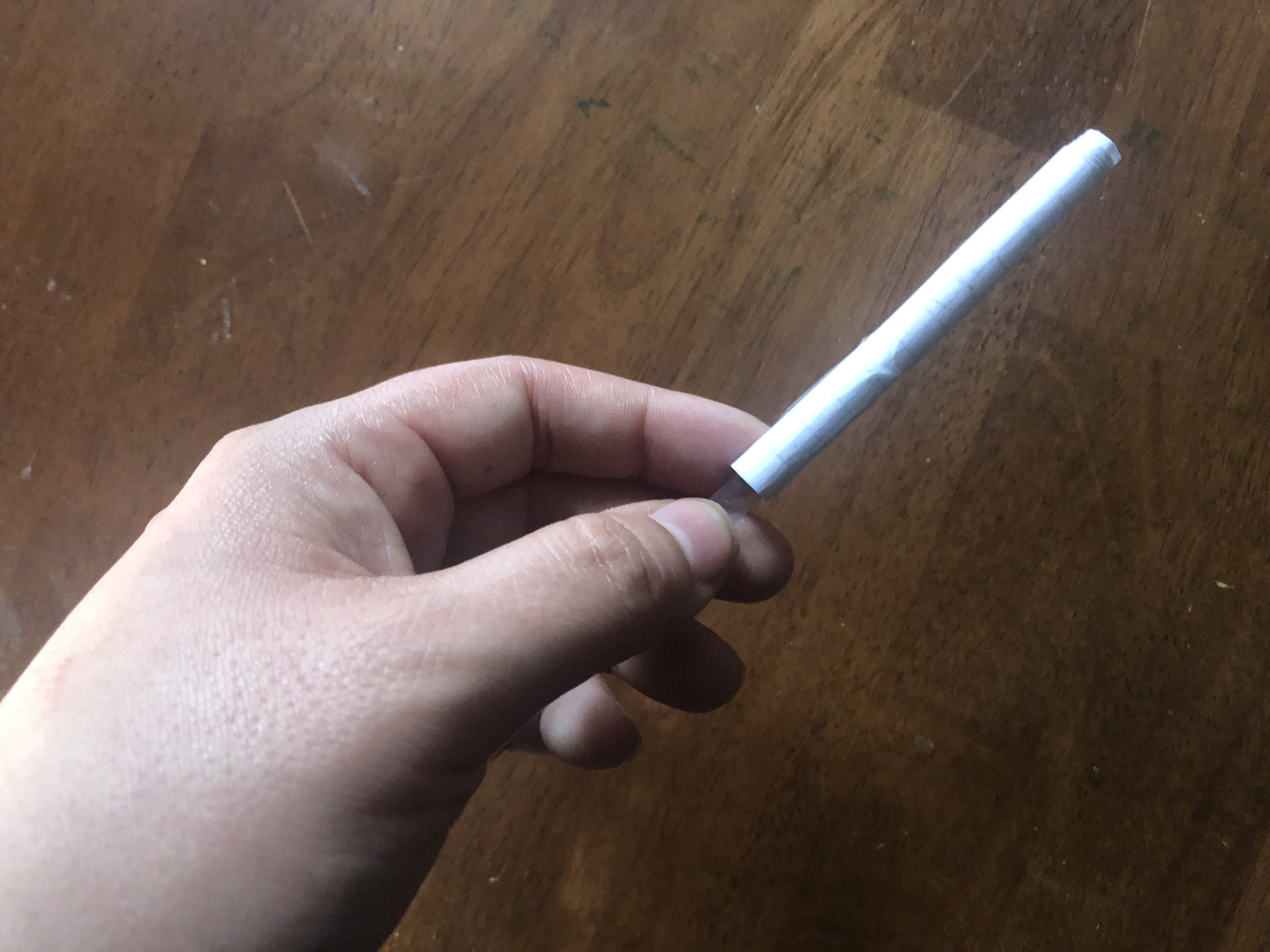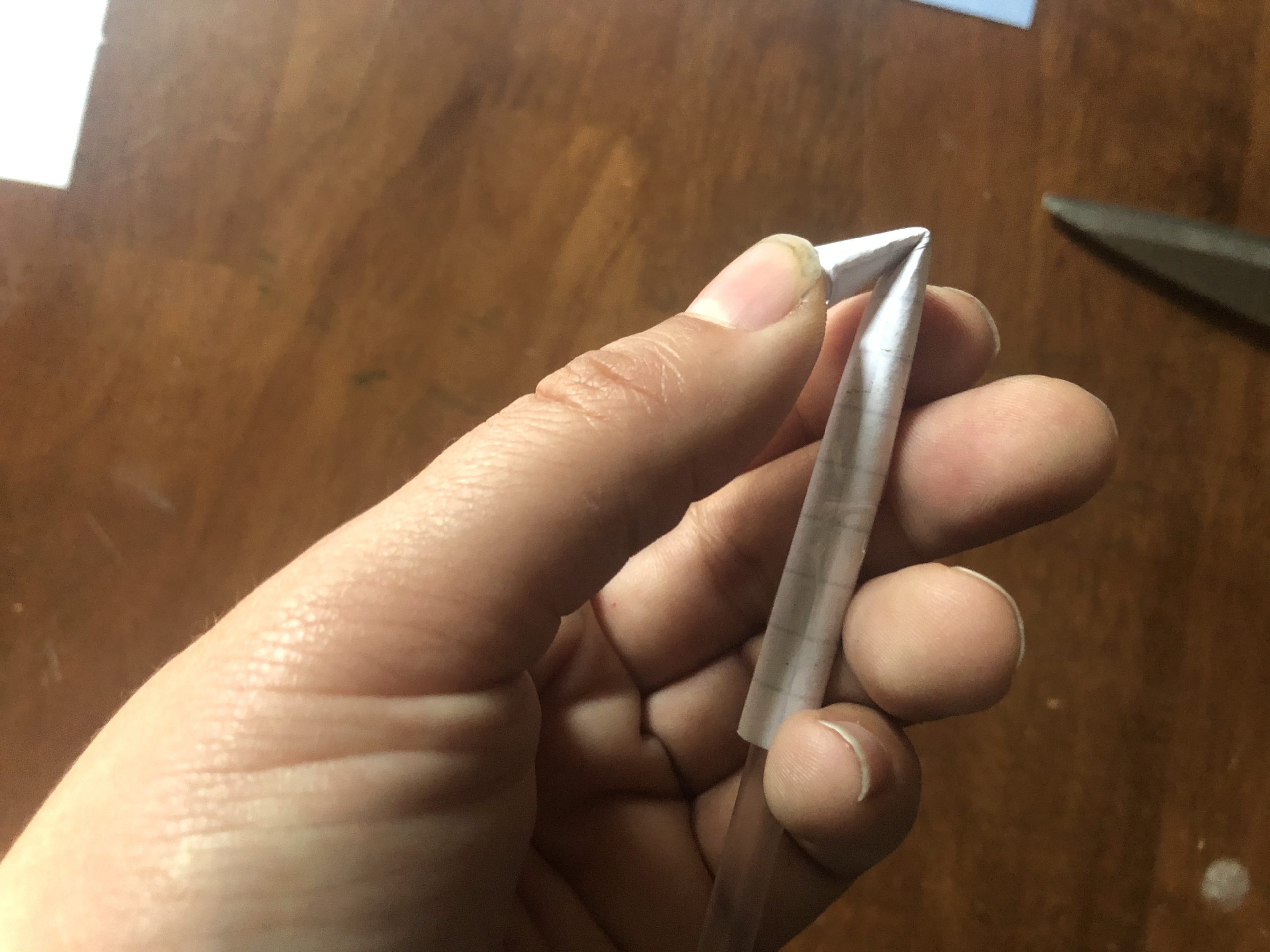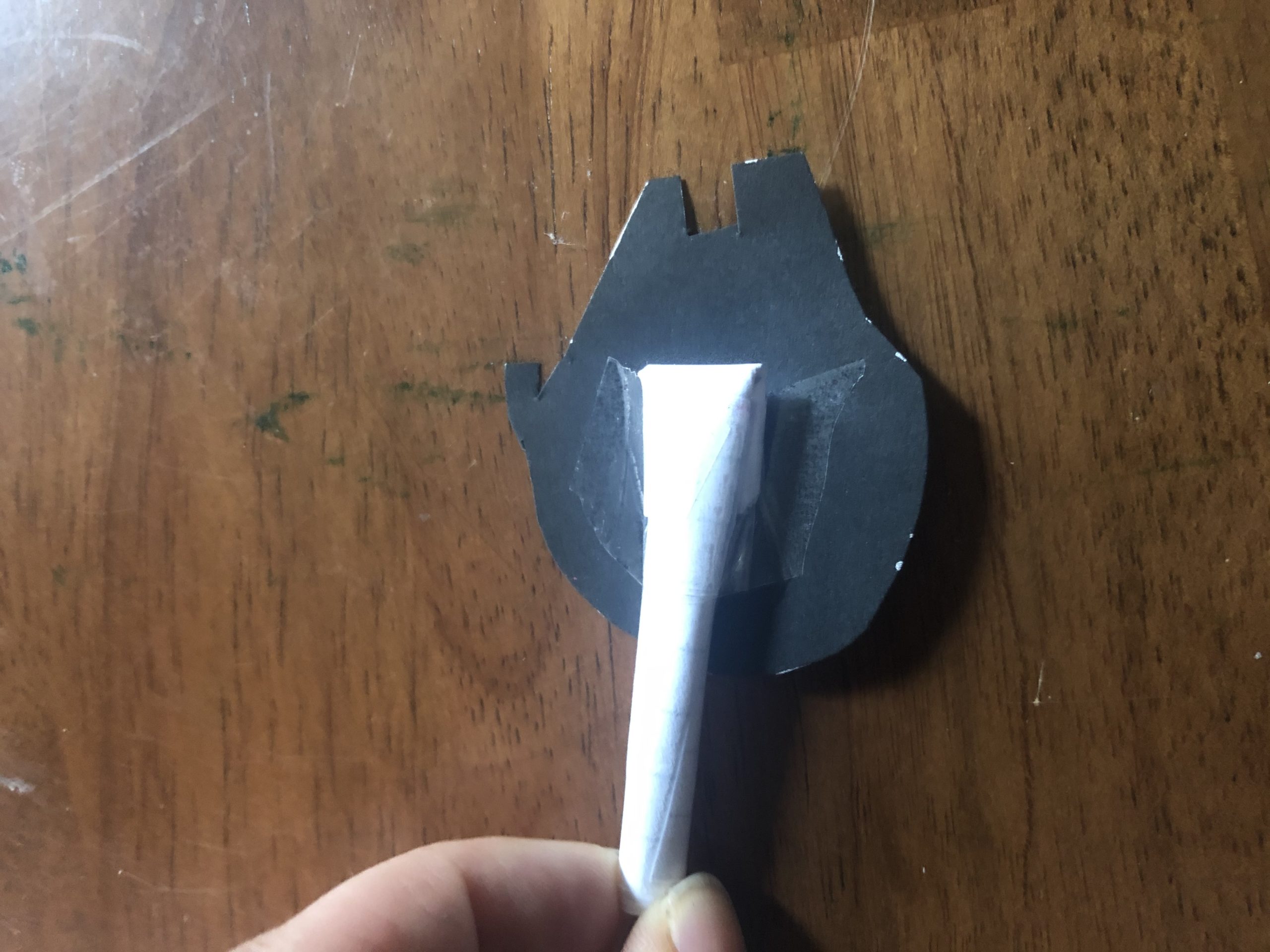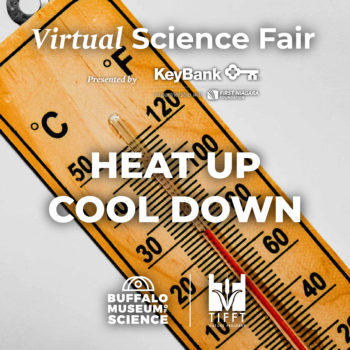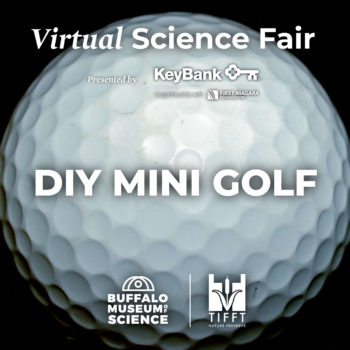Forces of Flight

Have science fun as a family! Complete activities with parental supervision.
Materials:
- Paper
- Art supplies (crayons, markers, etc)
- Scissors
- Tape
- Straw (one per person—do not share straws!)
- Ruler (optional)
Procedure
- First, use the paper and art supplies to make a spacecraft of your choice! Or two! Or three!
- Cut out a rectangular piece of paper. Ours was about 2 inches wide and 3 inches long but you can make yours longer for more stability in the air.
- Wrap the rectangle tightly around the straw and tape it together, so it holds its shape, but don’t wrap so tightly that you can’t slip the straw out of the tube you create.
- Fold one end of the paper tube and tape it down.
- Tape your spacecraft onto the paper tube.
- Optionally, cut triangles our of the paper and tape them to the back of the spacecraft for more stability in the air.
- Place the rocket at the end of the straw and use the force to launch it! The force of your breath, that is! Blow into the straw and send it flying!
- Be sure to take a picture or video to share in the Facebook comments on the Buffalo Museum of Science or Tifft Nature Preserve pages!
What’s it all about?
Forces are the pushes and pulls that make things move—and a lot of different forces to overcome before we can make a rocket fly.
Rockets have to move through air, which is made up of tiny molecules that slow the rocket down. This force is called drag and it occurs in water too!
Rockets also go against the force of gravity, which pulls the rocket back to the Earth’s (or another planet’s) surface.
Depending on how big the rocket is, it could need lots of energy to resist these forces and get airborne.
Try It!
- Don’t stop with just one rocket! Try different sizes, shapes and weights. Do some work better than others?
- Change the angle. How does the angle at which you launch the rocket change how far or how high it goes?
